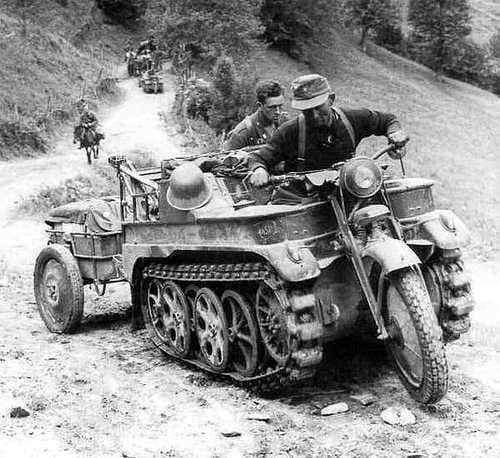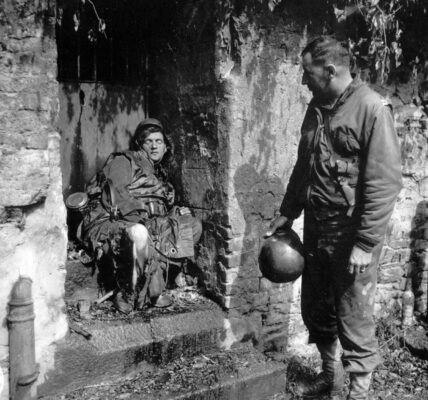
In the turmoil of World War II, Germany developed a variety of unusual and specialized vehicles to meet the changing demands of the front lines. One of the most remarkable and at the same time most unusual vehicles was the Kettenkrad , officially known as the Sd.Kfz. 2 (Special Motor Vehicle 2) . It fascinatingly combined the characteristics of a motorcycle with those of a half-track vehicle—and became a symbol of German wartime engineering.
The Kettenkrad was originally developed for the Luftwaffe, specifically for use in rough terrain where conventional vehicles failed. Its purpose was to tow light loads, cable drums, weapons, or even aircraft over short distances. Its design originated with NSU Motorenwerke AG, and series production began as early as 1940.
What made the Kettenkrad so special was its hybrid design : It featured a handlebar with a front wheel at the front, similar to a motorcycle, while the rear section was driven by a tracked drive. This tracked drive enabled the vehicle to move even over the most difficult terrain, such as mud, snow, or rocky mountain paths. The Kettenkrad could reach speeds of up to 70 km/h—a remarkable speed for a tracked vehicle of its size.
With a length of just under 3 meters and a weight of around 1.2 tons, the Kettenkrad was relatively compact. It offered space for the driver and two additional soldiers or equipment. A small trailer, the so-called “Sonderanhänger 1,” was often attached to carry more cargo. In practice, the Kettenkrad was used primarily on the Eastern Front and in North Africa , where terrain and weather conditions made the use of conventional vehicles difficult.
In addition to its function as a means of transport, the Kettenkrad was also used to tow light artillery pieces, anti-aircraft guns, or for laying cables. It was also popular with the paratroopers because it could be transported in the C-47 Dakota or the Ju 52 and deployed quickly after landing.
Soldiers valued the Kettenkrad for its maneuverability and versatility. Even though it wasn’t an armored vehicle and carried no weapons, its speed and off-road capability made it extremely useful in many situations. Especially in areas where heavy vehicles got stuck or couldn’t be used at all, the Kettenkrad was often the only option.
After the war, the Kettenkrad fell into obscurity for many years, but in recent decades it has enjoyed increasing popularity among collectors and military historians. Many of the surviving examples can now be seen in museums or privately owned, and a few working models are presented at historical military events or reenactments.
It’s also interesting to note that after the war, the Kettenkrad was briefly used for civilian purposes in agriculture and construction—an indication of how versatile this small vehicle was. Its design later even served as inspiration for other off-road vehicles.
Today, the Kettenkrad symbolizes the blend of innovation, improvisation, and technical brilliance that characterized many German developments during World War II. Even though its production ceased with the end of the war, it left a lasting impression—not least due to its unusual appearance and impressive performance in extreme situations.
📌 Conclusion : The Kettenkrad was more than just a curious war vehicle. It was a practical, sophisticated, and versatile tool that played a crucial role in many areas of the Wehrmacht’s operations. Its history tells a lot about the technical ambitions and challenges of the time.










